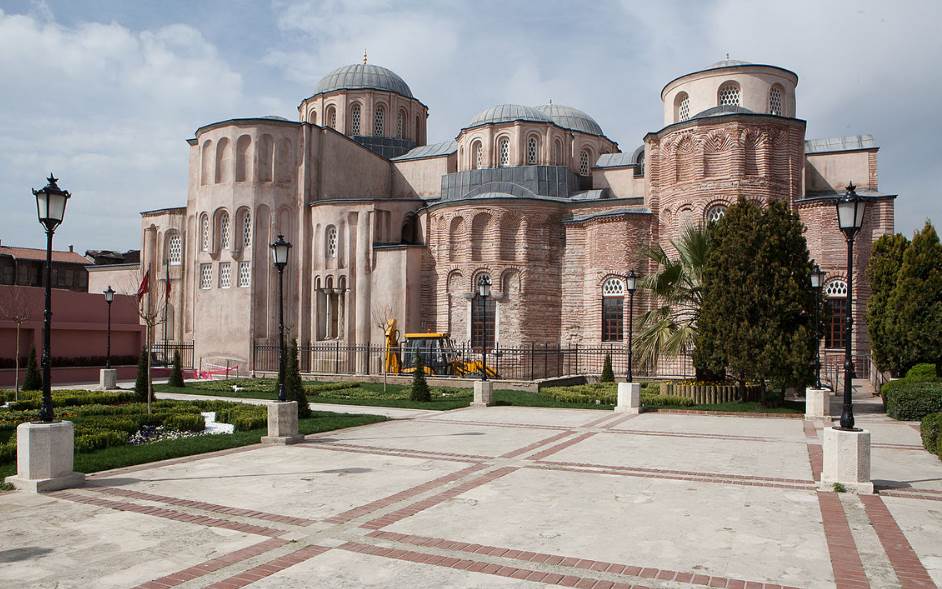Constantine the Great moved the capital of the Roman Empire from Rome to Byzantium in 330 A.D.
This was a remarkable move, but then again, he was also the Roman Empire to be baptized and convert to Christianity.
Byzantine architecture is therefore marked to have emerged in the 4th century, although the transition from Roman architecture isn’t as clear-cut.
It took many centuries for Byzantine buildings to become distinctively different from their counterparts constructed in other parts of the Roman Empire.
The robust nature in which these structures were built does resemble the Romanesque buildings that were constructed in various parts of Europe during the Middle Ages.
Stunning domes and interiors decorated with amazing mosaics are just a few of the elements that influenced Byzantine buildings as far west as Venice and as far north as Moscow.
1. Hagia Sophia – Istanbul
Hagia Sophia has been described as the epitome of Byzantine architecture. It’s located in the historical heart of Istanbul known today as the Fatih District and was constructed during the reign of the Eastern Roman Emperor Justinian I between 532 and 537.
This was a time that the city was referred to as Constantinople and it was constructed to serve as the Eastern Roman Empire capital’s main cathedral. It featured the largest open space of any building in the world in the 6th century and was one of the first to feature a full pendentive dome.

2. Basilica of San Vitale – Ravenna
The Basilica of San Vitale is another 6th-century structure that provides great insight into how Byzantine buildings were constructed. That’s mainly because it has been preserved remarkably well. It’s located in Ravenna, the former capital of the Western Roman Empire (402-476) and the Ostrogothic Kingdom (476-540).
The city in the northeast of Italy continued to serve as an important city as the Byzantine Exarchate of Ravenna between 540 and 751, which is why so many Byzantine structures can be found here. This building was constructed between 526 and 547 and combines Roman and Byzantine elements.
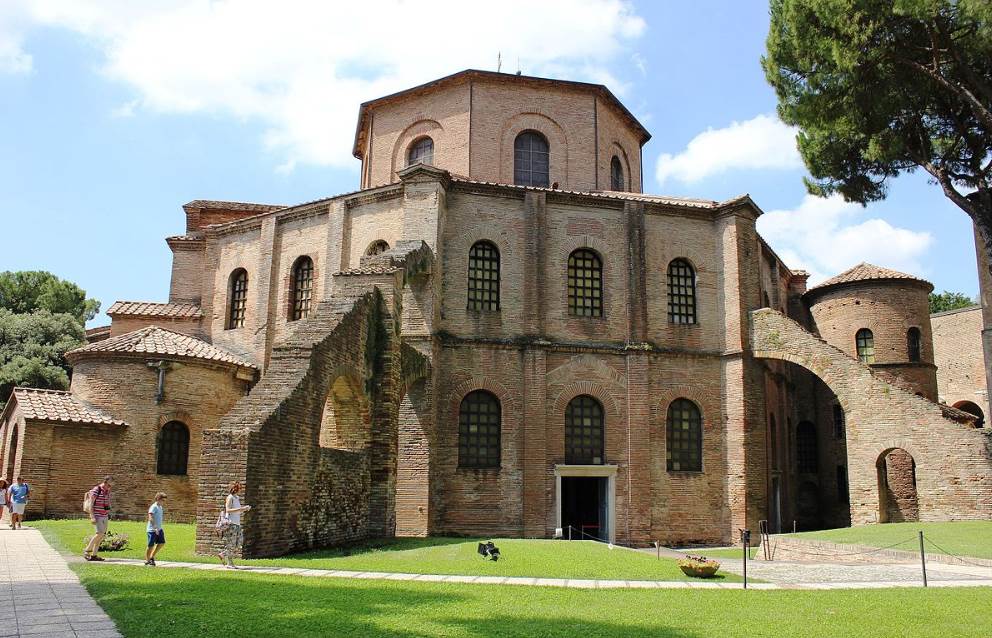
3. Hagia Irene – Istanbul
Hagia Irene is an Eastern Orthodox church in Istanbul and is one of the few ancient buildings in Istanbul that hasn’t been converted into a mosque. That’s mainly because it was used to store ammunition until the 19th century. It’s located just northeast of Hagia Sophia in the heart of the ancient city.
It’s also remarkably older than its larger counterpart nearby as it was commissioned by Constantine the Great himself in the early 4th century. It has been renovated several times throughout its history and is home to the only surviving synthronon from the Byzantine era. This is a tiered section of benches that was used by the clergy.

4. Saint Mark’s Basilica – Venice
Saint Mark’s Basilica is one of the most stunning buildings in Venice. Although it incorporates a wide variety of architectural styles, including Byzantine, Romanesque, and Italian Gothic, its plan was based on a Byzantine church called the Church of the Holy Apostles in Istanbul (it was demolished in 1461).
The Byzantine influence is reflected in the plan of the church. It features a centrally planned Byzantine design that was in sheer contrast with the accustomed rectangular plan in Venice during the Middle Ages. The interior of the building is heavily adorned with Byzantine gold-ground mosaics.
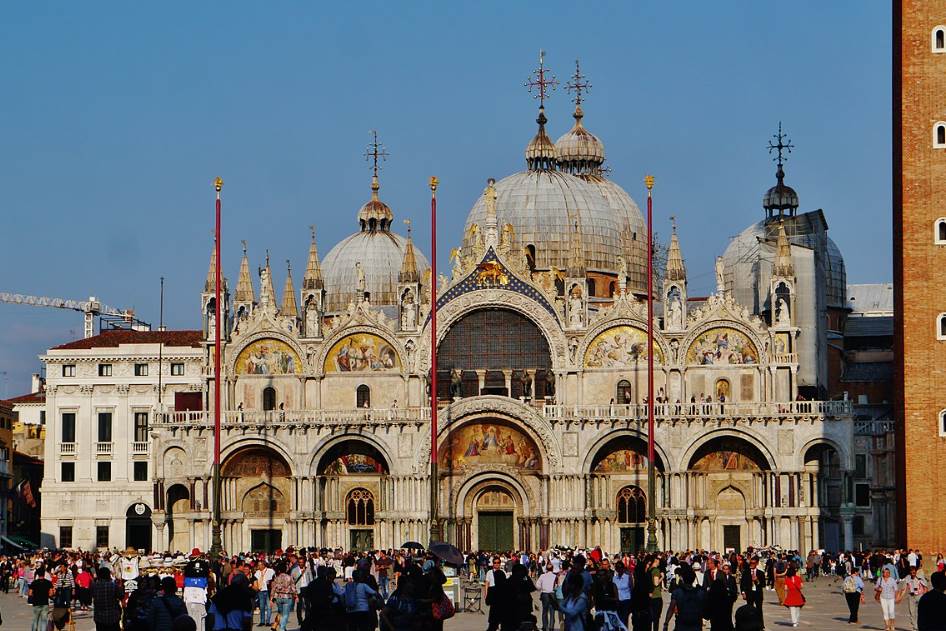
5. Church of Saint John the Baptist – Kerch
The Church of Saint John the Baptist is a Christian church located in the heart of Kerch, an important city on the Crimean Peninsula. It’s one of the oldest churches in Eastern Europe, if not the oldest. It was built when the Khazars, who were Turkic people, ruled in this region in the 8th century.
The church is located at the foot of the Mitridatskaya steps which allows you to climb 432 steps toward a series of ancient ruins on top of Mitridat Hill. The building features a four-pillar cross-dome and uses the same architectural design as Roman basilicas that were constructed during the 6th century.
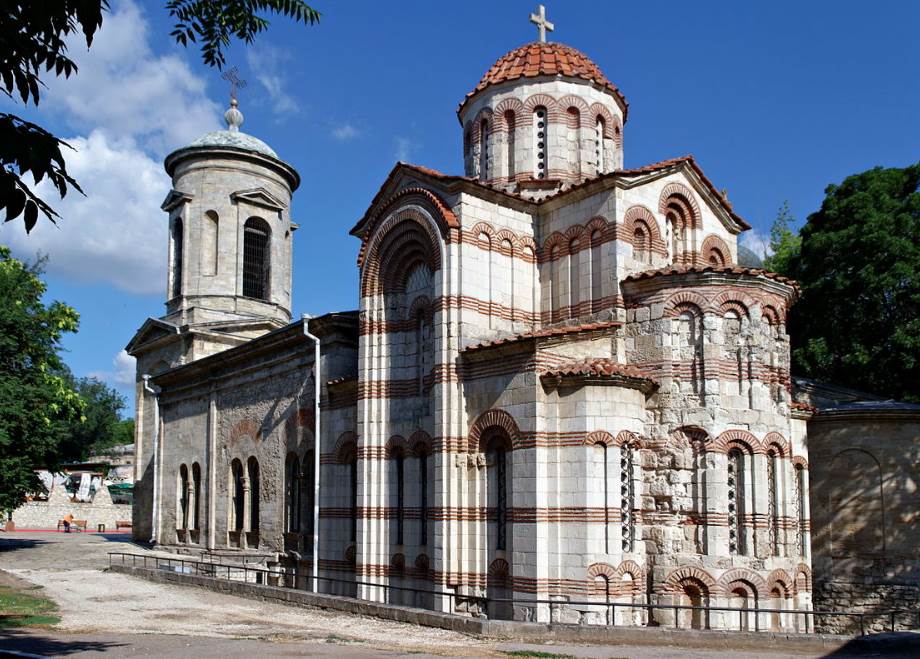
6. Church of Saint Demetrius – Thessaloniki
The Church of Saint Demetrius is also known as “Hagios Demetrius.” It is the main church dedicated to Saint Demetrius, the patron saint of the Greek city of Thessaloniki. It was initially constructed in the 4th century to replace a Roman bathhouse but this version of the church didn’t survive due to several fires.
The Byzantine building we see today was constructed between 629 and 634, a time that Thessaloniki was the second-largest city in the Eastern Roman Empire. It features 5 aisles and is home to remarkably well-preserved mosaic panels that back to the 7th or 8th centuries.
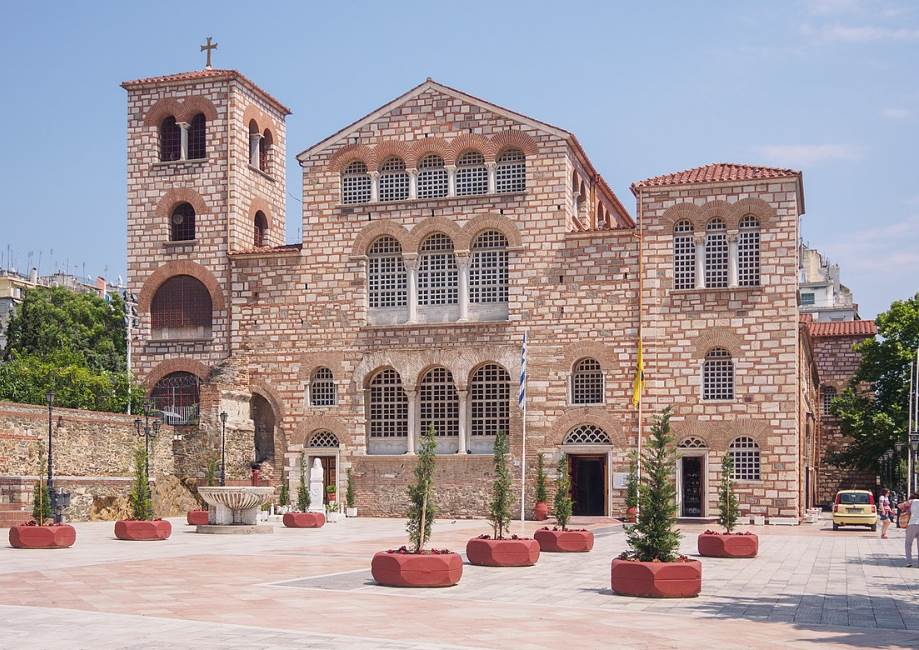
7. Pammakaristos Church – Istanbul
The Pammakaristos Church is also sometimes referred to as the “Church of Theotokos Pammakaristos” and is one of the most amazing Byzantine churches in Istanbul. It was converted to the Fethiye Mosque in the year 1591 and houses a museum today. It’s located in the Fatih district in the heart of Istanbul.
It’s unclear when the building was constructed with some art historians claiming that the original building was completed in either the 8th or 11th century. It features a design known as Palaiologos architecture, commissioned by the Byzantine Greek family that ruled for a long period in the Eastern Roman Empire.

8. Sant Apollinare in Classe – Ravenna
The Basilica of Sant’Apollinare in Classe is an ancient church located in Classe, a small town in the southern part of Ravenna. The church was consecrated by Bishop Maximian of Ravenna in the year 549 and was dedicated to a Syrian saint named Apollinaris of Ravenna. He was presumably the first Bishop of Ravenna and Classe.
The construction of this remarkable Byzantine building started in the early 6th century, right next to a Christian cemetery. The building features a central nave and two aisles and 24 columns of Italian marble. The semi-circular dome at the end of the nave is decorated with typical Byzantine mosaics.
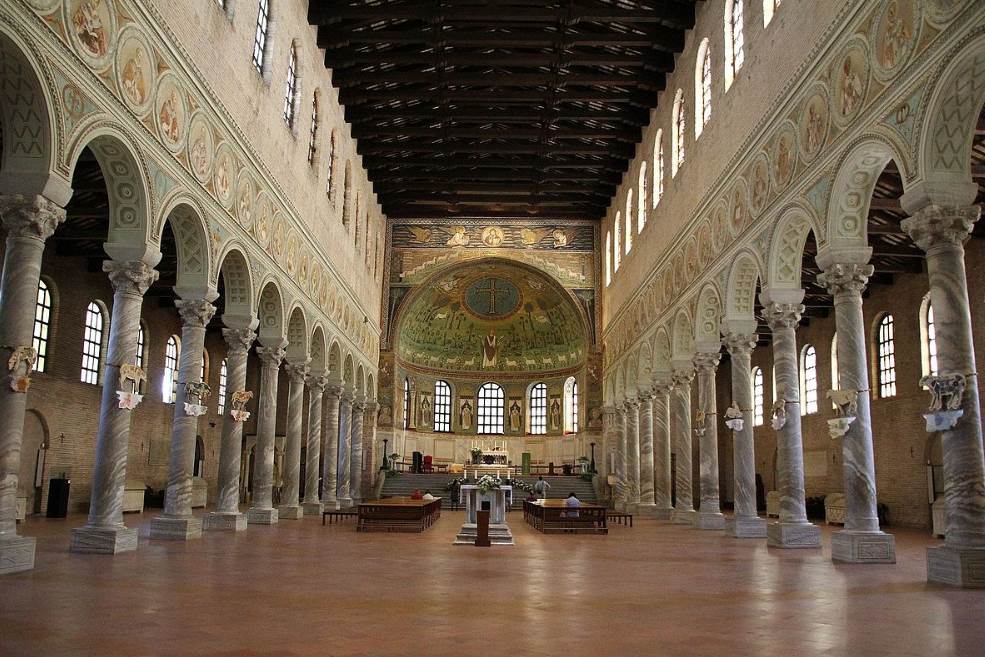
9. Hosios Loukas – Distomo, Greece
Hosios Loukas is a historic monastery that features a church that was constructed in the middle-Byzantine architectural style. It’s located in a rural area near the town of Distomo, not too far northwest of Athens. The location of the structure is remarkable as it was constructed on the slopes of Mount Helicon in the Boeotia region of Greece.
The monastery complex features several amazing Byzantine buildings that were constructed after the establishment of the monastery in the early 10th century. The Hosios Loukas is the only church in mainland Greece that was certainly constructed in the 10th century. A larger cathedral church referred to as a Katholikon was constructed between 1010 and 1011.
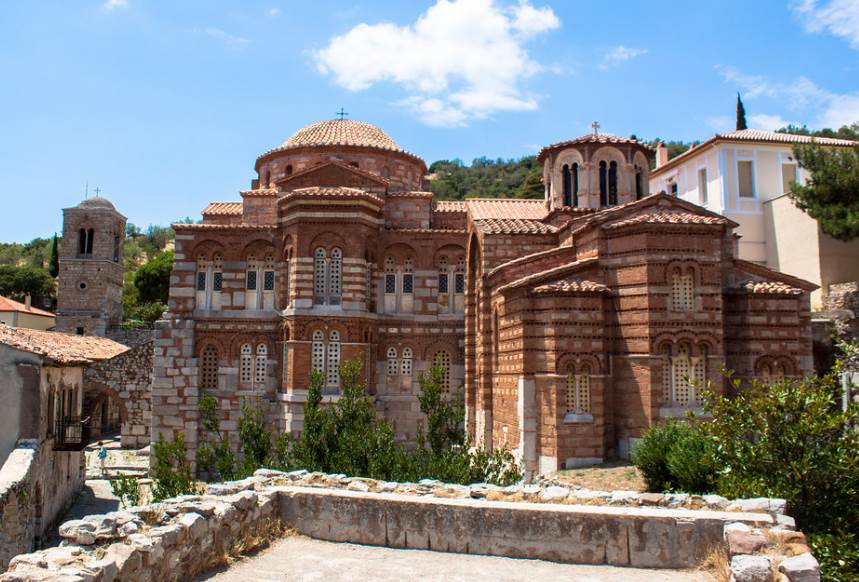
10. Zeyrek Mosque – Istanbul
The Zeyrek Mosque is another incredible example of middle-Byzantine architecture in Istanbul. It gave its name to the Zeyrek district in the Fatih District of the city. The mosque was established by combining two Eastern Orthodox Churches and a chapel and is the second-largest Byzantine building that still stands in Istanbul today.
The original structure was commissioned by Byzantine Empress Irene of Hungary to serve as a monastery. It was constructed between 1118 and 1124 and also featured a library and a hospital. The building features multiple domes and was constructed using the typical Byzantine recessed brick technique which provides the building with extremely robust walls.
